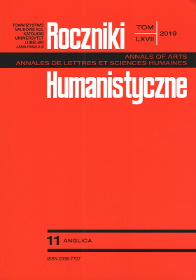An “Unexocentric” Synthetic Account of cut-throat and chimney sweep: Evidence from Polish
An “Unexocentric” Synthetic Account of cut-throat and chimney sweep: Evidence from Polish
Author(s): Joanna Kolbusz-BudaSubject(s): Language and Literature Studies, Theoretical Linguistics, Phonetics / Phonology, Morphology
Published by: Towarzystwo Naukowe KUL & Katolicki Uniwersytet Lubelski Jana Pawła II
Keywords: exocentric; synthetic compounds; (paradigmatic) conversion; left-branching structure
Summary/Abstract: In English, exocentric compounds, such as chimney sweep and cut-throat do not possess an overtly expressed suffix. Instead, they seem to be composed of a verb and an argument of that verb, e.g. dareVdevilN, shoeNblackV. Naturally, such an interpretation would immediately position the quoted examples among the representatives of root compounding.We are convinced that zero derivation plays a significant role in the formation of English synthetic compounds in the same way it is seen in Polish. We believe that the research material from Polish offers a substantial amount of evidence for the active participation of conversion in the process of synthetic compounding. This, in turn, accentuates the need to revisit the classification of such formations as spoilsport and chimney sweep, habitually classified as exocentric.This paper provides an ‘unexocentric’ synthetic account of N-V/V-N compound nouns in English. We believe that a root interpretation of shoeblack and daredevil types does not reflect their genuine structure, which, as we argue, rests on a combination of a nominal and verbal stems followed by a zero affix, being the locus of morphosyntactic features and the semantic referent.In our analysis, we draw on a revised version of LIH, i.e. Lieber and Scalise’s (2007) Firewall Theory, which belongs to the current of the so-called mixed models of word-formation advanced in the recent years by, for instance, Ackema and Neeleman (2004), Lieber and Scalise (2007), and Pafel (2017), allowing for a limited intermodular interaction between morphological and syntactic domains.
Journal: Roczniki Humanistyczne
- Issue Year: 67/2019
- Issue No: 11
- Page Range: 33-46
- Page Count: 14
- Language: English

